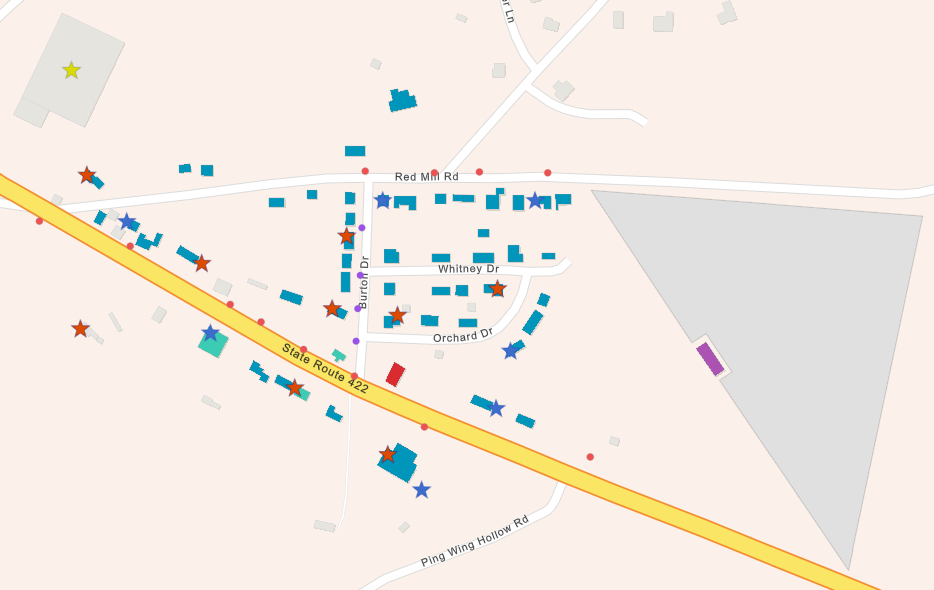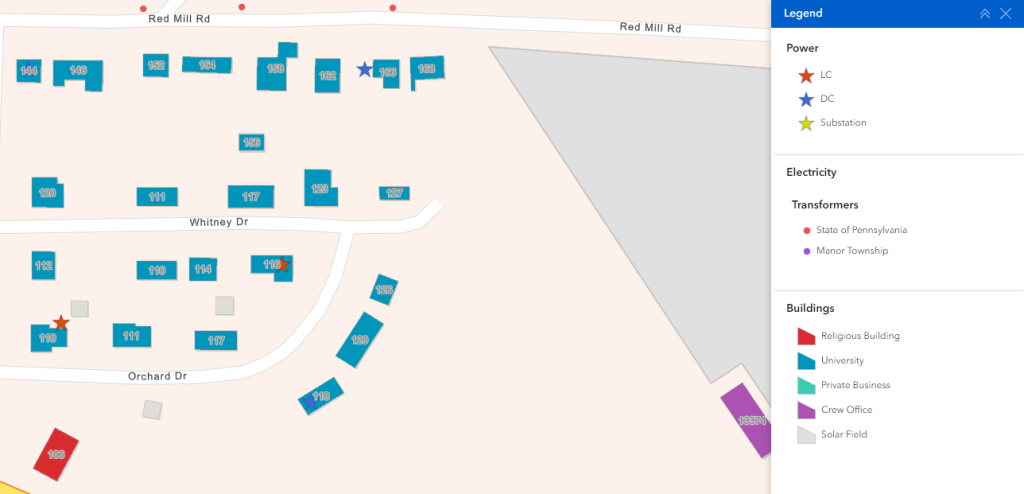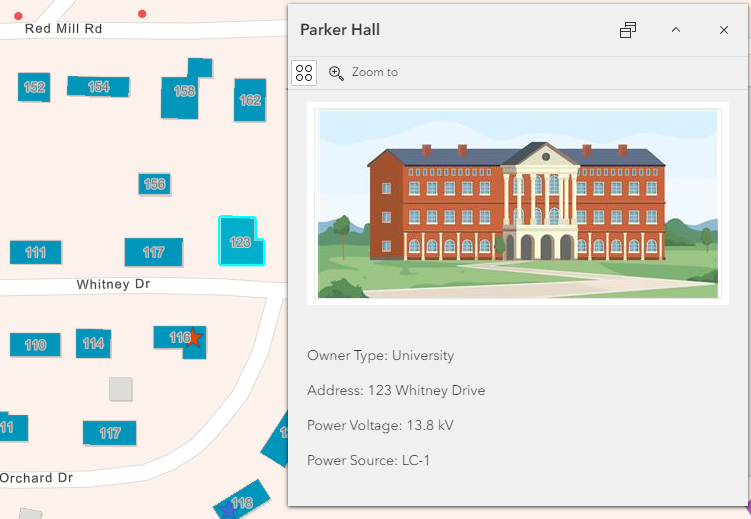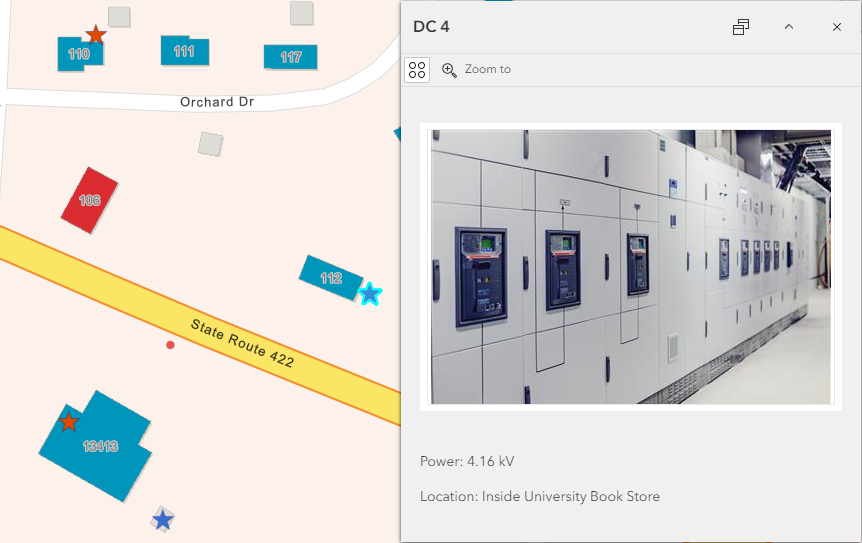
The electrical distribution system on a campus or in a district can be quite complicated, with lots of feeders and switchgear operating at various voltages. Much of the equipment may be located inside buildings, making it difficult for electrical maintenance and operations personnel to easily locate. This article will focus on the electrical distribution system on the fictional campus of Orchard College, shown in Figure 1.

Figure 1 – Orchard College (Fictional Campus)
The mapping of the campus or district electrical distribution system provides a graphical representation for the visualization and management of electrical systems and equipment within various buildings and structures.
For effective use on a tablet or computer, the system mapping should be created to be interactive. An interactive map is built on an aerial view of the campus or district and is developed using software that enables optimal online access, thus making it easy for maintenance personnel to locate specific equipment.
An interactive map generally includes the following:
Figure 2 shows a map and legend. Different types of buildings are located, as well as the locations of major electrical distribution equipment, such as substations and switchgear (LC for Load Center and DC for Distribution Center). A satellite view could be used instead.

Figure 2 – Sample Campus Map with Legend
When any of the above is selected to be highlighted, specific information is provided, such as:
An example of a selected building is shown in Figure 3. An example of a selected switchgear is shown in Figure 4. In both examples, this information shown is merely typical; any desired information may be included.

Figure 3 – Building 123 Selected, Parker Hall

Figure 4 – Distribution Center DC4 Selected
A complete and robust system map provides a useful reference for maintenance and operations personnel to view electrical feeds to the campus buildings, including the supplying switchgear and circuit breaker. An interactive map of the electrical distribution system can be invaluable for electrical maintenance personnel in numerous ways.
Interactive Maps can help in:
Overall, mapping software provides electrical maintenance and operations personnel with the information they need to operate efficiently. It may also help improve reliability. It will also meet the evolving needs of its customers and regulatory requirements. Where pen and paper were once sufficient, now software provides clarity and precision that can mean the difference between a functioning system and a potential hazard. As digitalization permeates every aspect of life, embracing these technologies becomes not just advantageous, but necessary.
Renewable Energy Integration into District Energy Systems